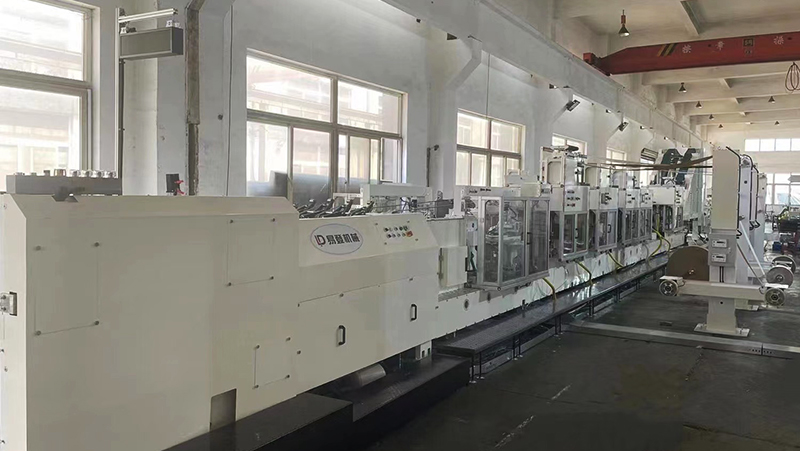Comprehensive Strategies for Ensuring Quality Control in Paper Bag Manufacturing
Release time:2025-05-27 Classification:Knowledge
In an era where sustainability and product reliability are paramount, maintaining rigorous quality control standards in paper bag production is essential. Paper bags serve diverse industries—from retail to food packaging—and their durability, safety, and aesthetic appeal directly impact user satisfaction. This article explores the critical components of effective quality control processes for paper bag manufacturing, emphasizing actionable methodologies to uphold consistency and compliance.

1. Raw Material Inspection: The Foundation of Quality
Quality control begins at the sourcing stage. Paper bags are primarily made from kraft paper, recycled fibers, or specialty materials. Key parameters to evaluate include:
- Basis Weight: Measured in grams per square meter (GSM), this determines thickness and strength.
- Moisture Content: Excessive humidity weakens structural integrity, while overly dry material may crack during printing.
- Tensile Strength: Ensures the paper can withstand stress during filling and handling.
Suppliers must provide certificates of analysis (CoA) for each batch, verifying compliance with industry standards such as ISO 536 or ASTM D646.
2. In-Process Monitoring: Precision at Every Stage
Real-time oversight during manufacturing minimizes defects and optimizes efficiency. Critical checkpoints include:
- Printing Accuracy: Alignment, color consistency, and ink adhesion are verified using spectrophotometers and visual inspections.
- Die-Cutting Precision: Sharp blades and calibrated machinery ensure clean edges and uniform dimensions.
- Handle Attachment: Handles must withstand pull tests (e.g., 10–15 kg force) without tearing.
Automated vision systems can detect flaws like misprints or glue gaps, allowing immediate corrections.
3. Finished Product Testing: Validating Performance
Post-production assessments simulate real-world conditions to guarantee functionality:
- Load-Bearing Capacity: Bags are filled to 120% of their stated capacity and monitored for seam failure.
- Drop Testing: Repeated drops from standardized heights (e.g., 1 meter) assess durability.
- Water Resistance: For food-grade bags, a spray test evaluates coating effectiveness.
- Print Rub Resistance: A crockmeter tests whether graphics smudge under friction.
4. Packaging and Storage Protocols
Even high-quality paper bags can degrade if stored improperly. Key safeguards include:
- Climate Control: Warehouses should maintain 40–60% relative humidity to prevent warping.
- Stacking Limits: Overstacking compresses lower layers, leading to deformation.
- UV Protection: Direct sunlight fades prints and weakens fibers; opaque wrapping is recommended.
5. Continuous Improvement and Compliance
Adopting a PDCA (Plan-Do-Check-Act) cycle ensures ongoing refinement. For example:
- Root Cause Analysis: Investigating defects like glue failures to update adhesive formulas.
- Customer Feedback Integration: Tracking returns or complaints to identify recurring issues.
- Regulatory Updates: Aligning with evolving standards like FDA guidelines for food-contact materials.
6. Employee Training and Cross-Department Collaboration
Skilled personnel are vital to maintaining quality. Training programs should cover:
- Equipment calibration techniques.
- Interpretation of test results (e.g., burst strength vs. edge crush resistance).
- Safety protocols for handling cutting tools and adhesives.
Regular audits foster accountability, while cross-functional teams (production, R&D, logistics) ensure cohesive quality management.
7. Environmental Considerations
As eco-friendly packaging gains traction, quality control must address sustainability metrics:
- Recyclability Verification: Confirming inks and coatings don’t hinder recycling processes.
- Biodegradability Testing: Accelerated decomposition trials under controlled conditions.
- Carbon Footprint Audits: Partnering with third parties to certify low-emission practices.
Conclusion: Building Trust Through Excellence
Robust quality control in paper bag manufacturing isn’t merely a compliance checkbox—it’s a competitive advantage. By integrating advanced testing technologies, fostering a culture of precision, and prioritizing sustainability, manufacturers can deliver products that meet both functional demands and environmental expectations. As consumer preferences evolve, a proactive approach to quality assurance will remain central to long-term success in the packaging industry.
This structured yet adaptable framework ensures every paper bag leaving the production line embodies reliability, safety, and aesthetic consistency—cornerstones of customer trust and brand reputation.






